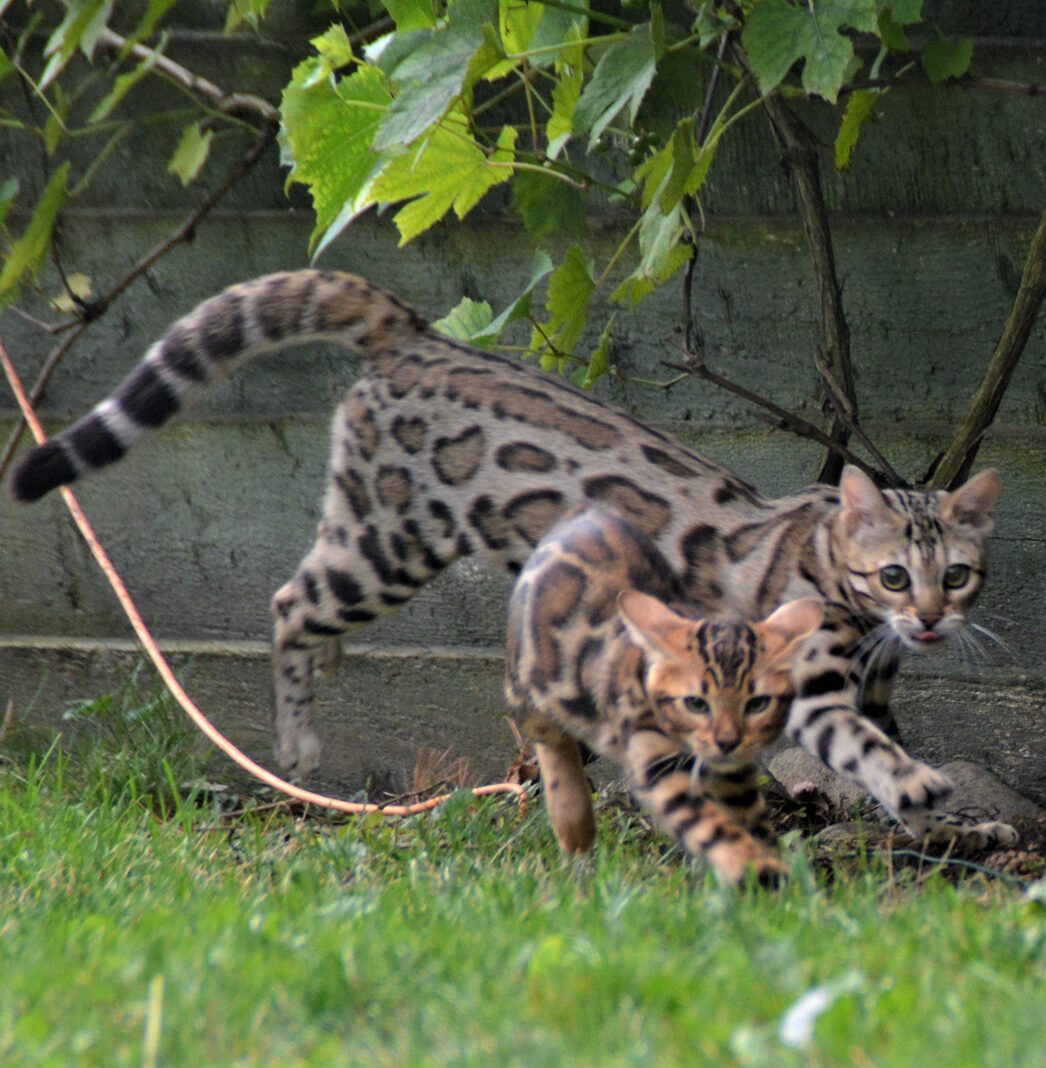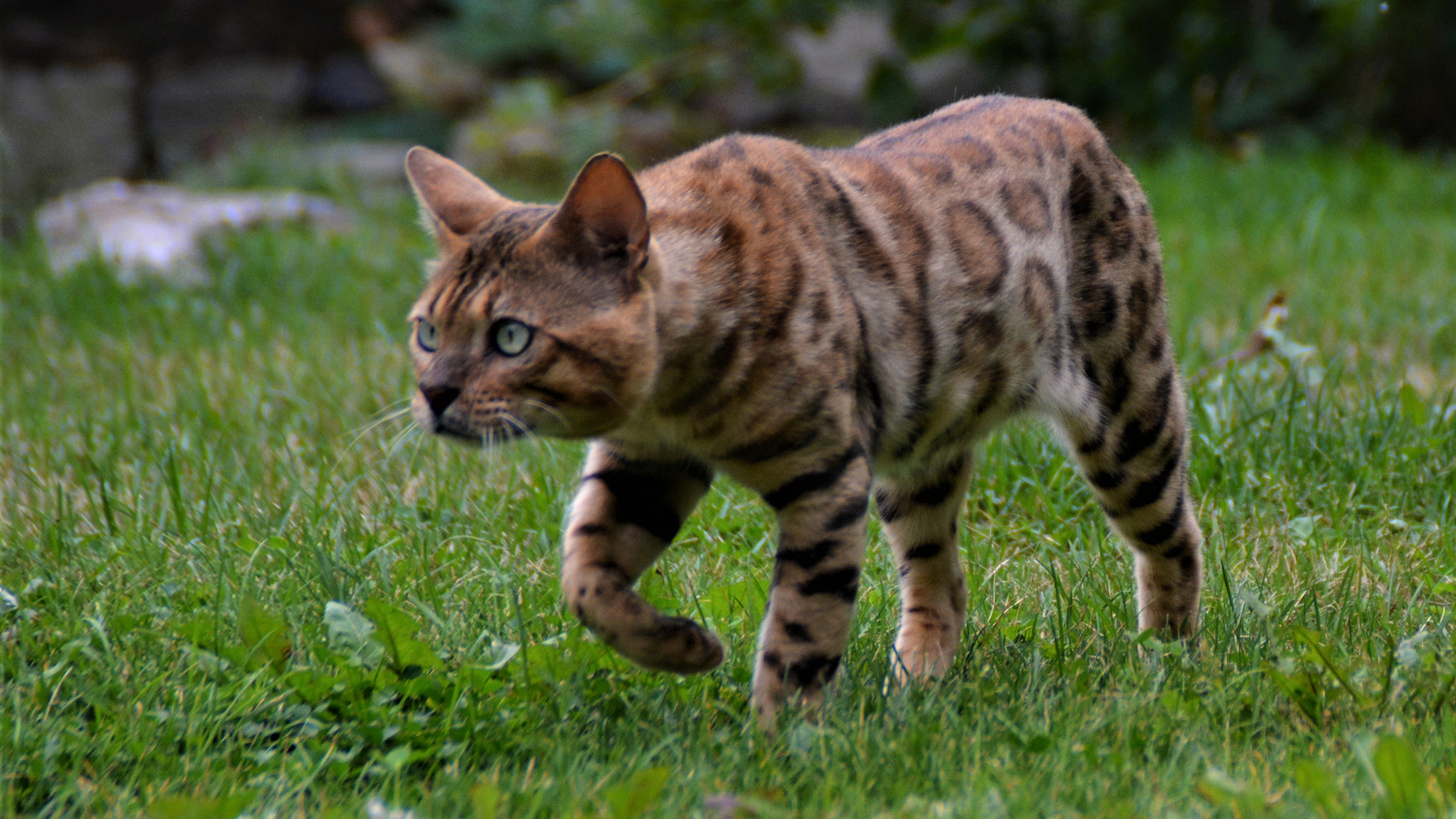With his distinctive spotted coat and large size, the Bengal looks like a wild cat on the prowl, but although one of his ancestors is the small, wild Asian leopard cat, he’s a domestic cat through and through. Bengals take their name from the Asian leopard cat’s scientific name, Felis bengalensis. They were created through crosses between an Asian leopard cat — which in the 1950s and into the 1960s could be purchased at pet stores — and domestic shorthairs. Jean Mill, a breeder in California, was the first to make such a cross, but not because she wanted to create a new breed. She had acquired a leopard cat and allowed her to keep company with a black tom cat so she wouldn’t be lonely. To her surprise, since she hadn’t thought the two species would mate, kittens resulted, and Mill kept a spotted female. Breeding her back to her father produced a litter of spotted and solid kittens. At about the same time, Dr. Willard Centerwall was crossing Asian leopard cats with domestic cats at Loyola University. The leopard cats were resistant to the feline leukemia virus, so researchers were interested in finding out if the trait could be passed on to hybrid offspring. Various breeders became interested in developing the cats as a breed. Mill was one of them. Changes in her life had caused her to give up cat breeding, but she was ready to begin again. She had acquired some of Dr. Centerwall’s hybrids and sought out suitable males to breed to them. One was an orange domestic shorthair that she found in India, of all places, and the other was a brown spotted tabby acquired from a shelter. Bengals today are considered to be one and the same with domestic cats, and any Bengal purchased should be at least four generations removed from any ancestors with wild bloodlines. The first cat association to recognize the Bengal was The International Cat Association, which granted the breed experimental status in 1983, followed by full recognition in 1991. The Bengal is also recognized by the American Cat Fanciers Association, the Canadian Cat Association and the United Feline Organization. Bengal cats are so sought after, that a British woman paid over $50,000 for her bengal cat in 1990, dubbing them the “Rolls Royce” of feline companions.


